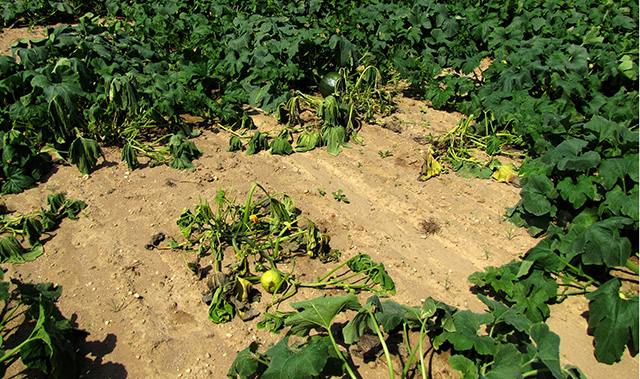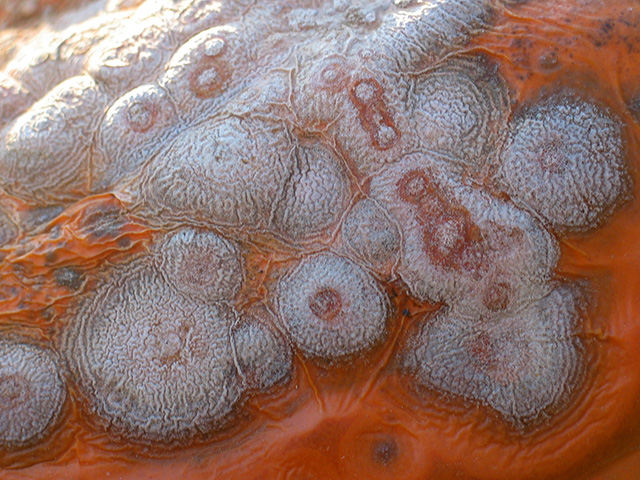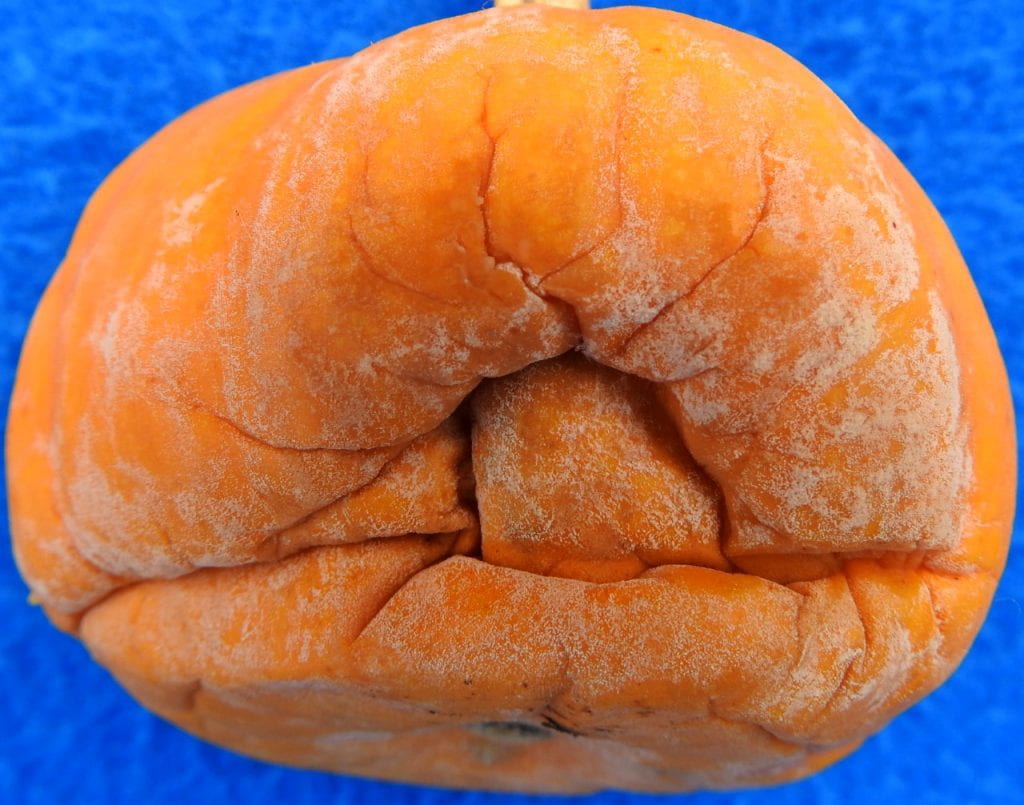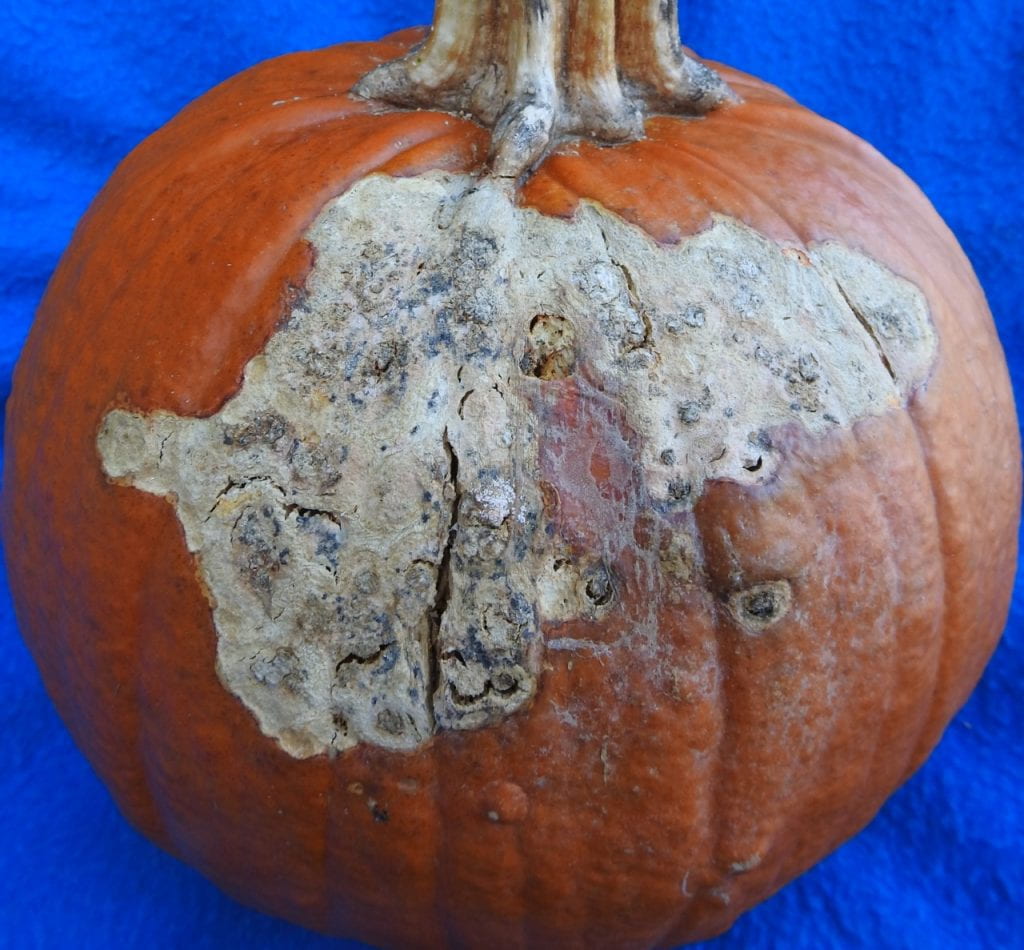The fungus Fusarium infects crown, root, and fruit tissue of pumpkin. Symptoms have been observed on Long Island in fields where there is limited rotation, such as those used for u-pick, suggesting that it takes time for pathogen population to increase to a damaging level.
It is important to distinguish Fusarium crown rot from Phytophthora blight because conventional fungicides with targeted activity against Phytophthora are not effective against Fusarium. Plants wilting and dying from Fusarium crown rot are rotten at the crown area extending downward into the main root, internal tissue is yellow to orange while plant tissue infected by Phytophthora is collapsed, dark on the outside and inside, and occurs at the crown and further up on the vine with the roots often not affected. Fusarium crown rot tends to affect plants scattered throughout a field while Phytophthora blight is more often in areas where soil water drainage is poor. Both pathogens can survive in soil for years.
Fusarium also causes a fruit rot that starts as small water-soaked spots on the bottom of fruit.
Proline is a new fungicide labeled for diseases caused by Fusarium. It can be applied once to soil, using ground application equipment, drip irrigation or other chemigation equipment, and twice to foliage. Proline is also labeled for powdery mildew and gummy stem blight.
There are several biofungicides that can be applied to soil for soil-borne pathogens including Fusarium and Phytophthora: Actinovate, Bio-Tam, RootShield Plus, and Serenade ASO. These have biological control agents as the active ingredient and are approved for organic production. These products have different active ingredients and could be used together. Bio-Tam can be applied broadcast to soil up to 7 days before planting. It also can be applied in-furrow, as a band, or through irrigation. Serenade ASO use directions for this application are as a directed spray (2.2-13.2 fl oz/1000 row ft) in the furrow just before the seeds are covered for both crop types. Actinovate AG can be applied to seed as a spray or dry coating, or applied in-furrow at 1-12 oz/A. RootShield Plus WP also can be applied in furrow. It can also be applied as a soil drench to seedlings before transplanting or in transplant starter solution.
Please Note: Fungicides mentioned are for use in commercial production, not gardens. The specific directions on pesticide labels must be adhered to — they supersede these recommendations if there is a conflict. Any reference to commercial products, trade or brand names, is for information only; no endorsement is intended. For up-to-date information on labeled conventional fungicides see Cornell Integrated Crop and Pest Management Guidelines for Commercial Vegetable Production and biopesticides see the Biopesticides website.
But affected fruit may have no spores:


















